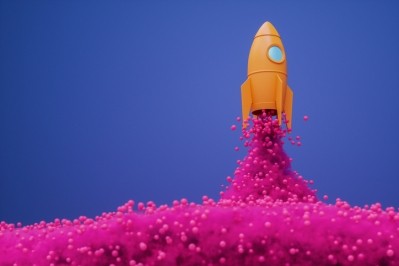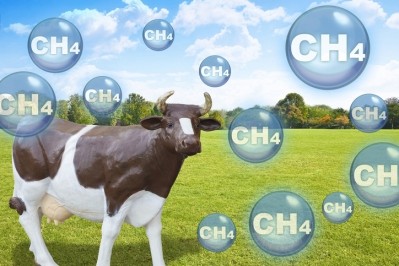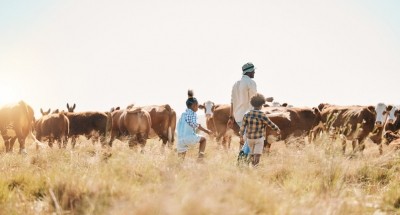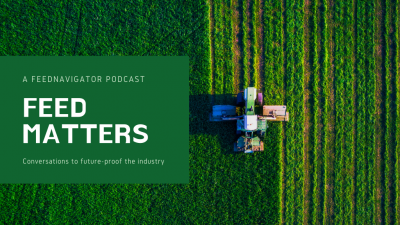US: Symbrosia testing seaweed additive in carbon insetting program on organic dairy farms
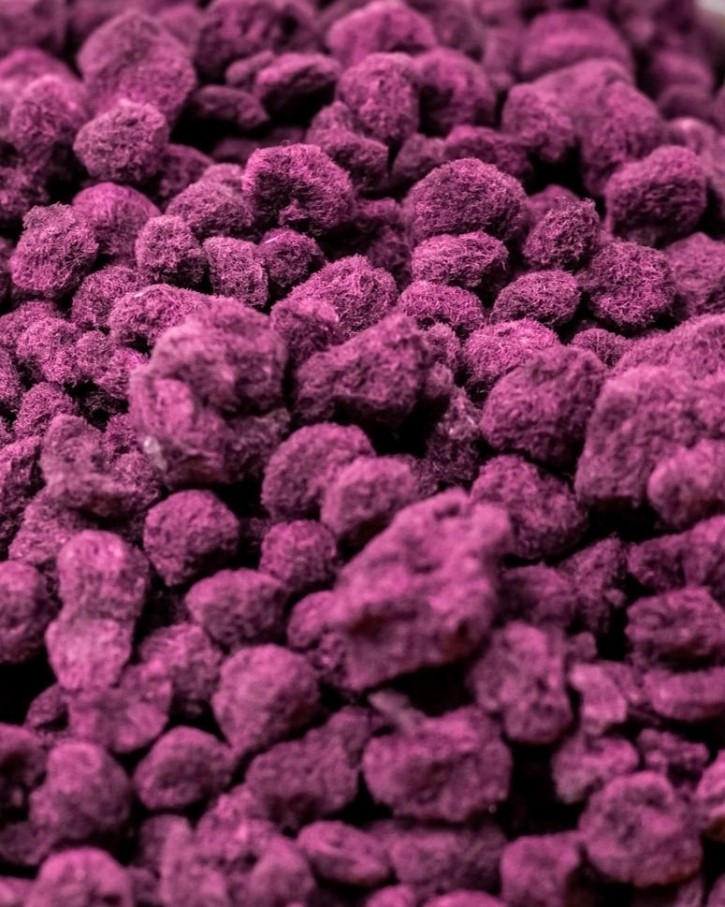
The companies will evaluate Symbrosia’s organic seaweed feed additive, SeaGraze, derived from the red seaweed, Asparagopsis taxiformis, as an insetting intervention for small organic family farms.
With support from its Farmers Advocating for Organic (FAFO) program, Organic Valley has designed a SeaGraze pilot to determine the benefit the additive will have on its 1,600 member farms. The six-month long study got underway in July and is taking place with an organic dairy research herd at the University of Minnesota’s West Central Research and Outreach Center.
The pilot is being supervised by Dr Bradley Heins, who has two decades of experience in research on organic dairy production.
Carbon insetting project
Pending the outcome of the pilot, Organic Valley will look to scale the use of SeaGraze within its carbon insetting program in the coming years.
The Organic Valley Carbon Insetting Program (OVCIP) is set to double in size with the aid of a US Department of Agriculture (USDA) climate-smart commodities grant.
The OVCIP will provide technical and financial resources to accelerate the adoption of 1,200 new carbon reduction and removal projects on 500 Organic Valley member farms over the next five years.
Through this program, Organic Valley said it will become the first cooperative to offer direct farmer payments for carbon reduction and removal, as well as cost-share for the design and implementation of climate-smart agriculture practices.
Nicole Rakobitsch, director of sustainability at the cooperative, said it aims “to become the first major dairy brand to reduce farm emissions without relying on carbon offsets. While the practice of insetting is not as widely practiced as offsetting, it is quickly gaining traction as more companies recognize the importance of strengthening the resiliency of their direct supply chains. For Organic Valley that means investing in [its] member-farms."
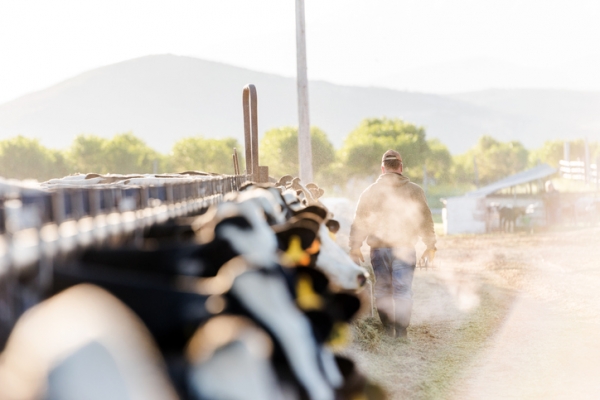
Disrupting the functioning of the culprits behind methane generation
Global research and commercial trials have shown that adding a small amount of A. taxiformis to livestock feed can reduce enteric methane emissions by over 50% in dairy cattle and over 80% in beef cattle, reported the company. This seaweed is native to Hawaiʻi.
The key active compound found in SeaGraze and red seaweeds in general for the purpose of mitigating enteric methane emissions is bromoform.
“Bromoform exerts its influence by disrupting the functioning of methanogenic archaea, the culprits behind methane generation during the fermentation process in the rumen. It accomplishes this by acting as an analog and perturbing the final catalytic step of methanogenesis,” said Alexia Akbay, CEO of Symbrosia.
Symbrosia, said Akbay, has been cultivating strains that are "significantly more productive, potent, and resilient" than wild populations. After identifying fast-growing strains, it then develops them into high-value products:
“We collected over 500 genetically diverse strains of A. taxiformis by snorkeling four Hawaiian Islands, developed a suite of technologies including 3D-printed hardware, phenotypic selection, and RNASeq-enabled gene expression protocols, and got to work unlocking the full potential of A. taxiformis. These strains are further selected for traditional breeding, we are committed to non-GMO strain improvements in the future,” continued the CEO.
Most efforts to improve feed quality focus on activities during active growth as well as in post-processing.
“While several such approaches are described in the public domain, we have developed other proprietary protocols in-house to continually increase bromoform concentrations beyond our current success. Additionally, we are the first Asparagopsis company to produce USDA organic-certified products at commercial facilities.”
In addition, she said Symbrosia ensures costs are kept to a minimum in its production model:
“We recently received grant financing to implement automation across our farm for seaweed transfers, harvests, and system cleaning. Additionally, we have developed methods for processing that utilize less energy while maintaining higher quality than industry standards.”
Necessity for prolonged studies
This six-month long trial with Organic Valley will be the longest time that the effect of SeaGraze has ever been studied in an actual herd. It represents a “significant extension in duration compared to previous endeavors,” confirmed Akbay.
She outlined how the existing body of peer-reviewed literature primarily consists of investigations involving wild-harvested A. taxiformis, with the lengthiest trial for beef cattle spanning 21 weeks (Roque et al. 2019) and 32 days for dairy cattle (Alvarez Hess et al., 2023).
“Researchers have emphasized the necessity for prolonged studies to comprehensively grasp the long-term implications of red seaweed utilization, as well as to gauge its sustained effectiveness over extended periods,” Akbay told FeedNavigator.
Australian data
The findings of a 300 day long trial of an Asparagopsis product were released in a report in July from Meat and Livestock Australia (MLA). The results showed much lower reductions in methane production than previous studies. The supplement was added to the diets of 40 wagyu cattle in an Australian feedlot. The methane they produced was cut by 28% as opposed to the reductions of between 80 and 90% seen for such seaweed products in previous trials of much shorter duration. The trial also found the cows given the supplement ate less food and weighed 15kg less by the time they were sent for slaughter.
Mitigating potential economic losses
Asked about the results of Symbrosia’s earlier trials and ongoing projects in relation to the impact of SeaGraze on production parameters, and the percentage of methane emissions reduction seen, the CEO commented:
“In order to uphold the integrity of our ongoing studies until they undergo peer-reviewed scrutiny, our current capacity for sharing detailed information is constrained. However, we derive substantial optimism from the effectiveness of our product, which mirrors findings from wild harvest studies, and its commendable palatability—a previously noted concern.
“Our foremost goal is to meticulously refine our formulation and dosing methodologies through all avenues to mitigate potential economic losses, including declines in milk production and milk constituents among dairy cattle, as well as any detrimental impacts on growth rates in beef cattle as needed.
“It's important to recognize that, like many ingredients, red seaweed is not exempt from the principle that 'too much of a good thing' can have adverse effects.”
SeaGraze can be included in a total mixed ration (TMR) within the mixing wagon, alongside other components, or provided in conjunction with mineral when cattle are on pasture. “The future promises intriguing opportunities for the incorporation of SeaGraze into a variety of cattle and small ruminant systems in unique forms including oil-based and pelletized options.”
Next steps
Symbrosia’s current focus is on scaling production and processing to provide SeaGraze to an ever-increasing list of interested customers, both in a trial and commercial capacity. “We are actively investigating alternative formulated products to better meet the climate goals of our partners and building a brand ideology that actively supports the livestock producers in this transition so that they are the main beneficiaries," said Akbay.
In June 2022, Symbrosia raised $7m in a funding round led by Danone Manifesto Ventures.
The company is planning to leverage funding to continue to build out seaweed production capacity and implement emerging technologies to reduce costs over time as it hits the mainstream market.
It is currently producing SeaGraze to support 100s of head of cattle but is expecting to shift quickly over the next six months to support 1000s of head. “Our target is one million cows on SeaGraze by 2030. We are aligning with global partners to begin regulatory approval in other geographies of interest to continue commercialization on a global scale.”
